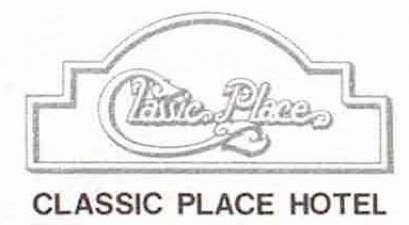USSR 1991
USSR 1991

USSR 1991

During my upbringing in the 1950s and 1960s, the world was divided into two tense groups of nations during the period known as the Cold War. One side consisted of the capitalist nations, or the Western bloc, which included the United States, the other NATO nations of North America and Western Europe, Japan, Australia and New Zealand. The other side consisted of the socialist (or communist) nations headed by the USSR, and this included the ‘satellite’ nations of Eastern Europe, Vietnam, Cuba and North Korea. It used to include China, Albania, Romania, Yugoslavia and others, but geopolitical rivalries had caused some disintegration within the socialist bloc.
The Cold War became entrenched in everyone’s psyche when the Berlin Wall was erected in 1961, so when the Berlin Wall fell in 1989, it was clear that a Very Big Change was underway that would inevitably challenge my view of the world as a “Cold War Kid”. That change reached its climax with the disintegration of the USSR at the end of 1991.
The Soviet Union (or more formally, the Union of Soviet Socialist Republics – the USSR) was established in 1922, and its existence shaped geopolitics for the next seven decades. Not knowing that the USSR was about to disintegrate, I had arranged to lead a study tour for the Geographical Society of New South Wales from 28th September to 13th October 1991.I spent almost two years planning the study tour, developing a detailed itinerary that included Moscow, Leningrad, Vladimir and Suzdal in Russia, Tallinn in Estonia, and Tashkent and Samarkand in Uzbekistan.
In 1985, the USSR’s Mikhail Gorbachev embarked on a reformist agenda that was designed to break the economic, cultural and political stagnation that had stifled progress since the Brezhnev era. There were two main arms to Gorbachev’s agenda – glasnost (гласность), which means “openness” or “transparency”, and perestroika (Перестройка), which means “restructuring”.
The reform agenda caused increasing resentment in the USSR among those groups who felt they were being pushed into areas of discomfort, and Gorbachev’s popularity declined steadily (especially when he placed restrictions of the sale of cheap vodka). The disenchantment boiled over into an attempted coup d’état by Communist hand-liners in August 1991.
On Monday morning of 19th August 1991, I remember driving to work and listening to the alarming news reports on the radio that tanks were rolling through the streets of Moscow. Perhaps selfishly, my first thought was “there goes two years of planning!”. Members of the KGB and a group of hard-line military officers were so worried that glasnost and perestroika would destroy the Soviet Union as they knew it that they decided to mount a coup and overthrow Gorbachev while he was on holiday at his dacha in Crimea. They cut all Gorbachev’s communications, but apparently forgot about his BBC satellite link, so Gorbachev was able to react by following what was happening on the BBC.
The coup was not successful, and on 22nd August Gorbachev returned to Moscow and had the coup leaders arrested as traitors. It seemed that my study tour might be able to go ahead as scheduled.
And so it did. The trip went ahead, and it was something of a pioneering venture, being the first (and only) Geographical Society study tour ever conducted to the Soviet Union (including to its constituent republics after the USSR’s break-up). Of course, none of us knew at the time that the USSR would cease to exist in less than a hundred days after our visit. Yes, our visit occurred in what was obviously a period of significant disruption, but any thought that one of the world’s two global superpowers, a nation that all of us had grown up with and whose shadow had dominated global politics all our lives, might no longer exist within a few months seemed absurd. None of knew what was about to happen.
This was not my first visit to the USSR, of course, as I could not have been leading a study tour if it had been. My first visit was in late March and early April 1987 when I visited Moscow and Leningrad in Russia, and L’vov in Ukraine. The photos of the Soviet Union on today’s page are from that earlier trip.
Our group for this trip met at Sydney Airport on Saturday 28th September and we caught a Qantas Boeing 747-400 (VH-OJD) on flight QF105 to Bangkok, our intermediate stopover on the way to Moscow. The diary notes that follow are slightly edited versions of the longhand letters I wrote and posted to my wife, Di, every day while I was on the study tour. Please note that through this travel diary I have used the place names that were used in 1991. Some of these names have since changed, and to state the obvious, the Soviet Union (or USSR as I sometimes refer to it interchangeably) no longer exists.
The flight across to Bangkok today was basically good – a little rough on take-off due to winds, but otherwise good. We flew over Ayers Rock (Uluru), but it was obscured by cloud. The movie was “Flirting”, a good recent Australian film that was on at the theatres earlier this year.
Apart from some very long queues at Bangkok’s Don Muang Airport, everything went smoothly at Immigration. An air-conditioned bus brought us to the hotel, the Classic Place Hotel. You really begin to understand Bangkok’s traffic problems when you get caught up at 10:45pm at night! The hotel is comfortable with very large rooms, and it overlooks a khlong (canal) on one side and a major traffic intersection on the other.
Bangkok is two-thirds the way through the wet season at the moment, so everything is quite moist. Apparently they are getting one heavy two-hour fall of rain each day, but the time of day when it falls is unpredictable.

Day 1
Sydney to Bangkok
Saturday
28 September 1991










